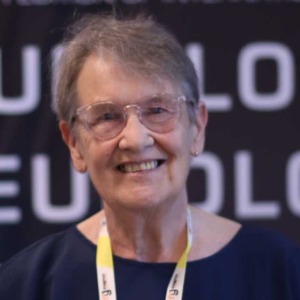HYBRID EVENT: You can participate in person at Barcelona, Spain from your home or work.
Cerebral Blood Flow and Metabolism
Cerebral Blood Flow and Metabolism
The movement of blood through a network of cerebral arteries and veins that supply the brain is known as cerebral circulation. In an adult human, cerebral blood flow is generally 750 millilitres per minute, or roughly 15% of cardiac output. Arteries supply the brain with oxygenated blood, glucose, and other nutrients. In functional magnetic resonance imaging and optical imaging, cerebral blood flow (CBF) and cerebral metabolic rate of oxygen (CMRo(2)) are significant drivers of contrast. The relationship between CBF and CMRo(2) during cerebral activation, on the other hand, is still debated. Experimental experiments have led to inconsistent outcomes, despite the fact that most previous models tend to suggest a nonlinear interaction.
- Anterior Cerebral Circulation
- Posterior Cerebral Circulation
- Role of Intracranial Pressure
- Cerebral Perfusion Pressure
- Neuroimaging
Committee Members

Ken Ware
NeuroPhysics Therapy Institute, Australia
Robert B Slocum
University of Kentucky HealthCare, United States
Yong Xiao Wang
Albany Medical College, United States Neurology 2026 Speakers

W S El Masri
Keele University, United Kingdom
Jaqueline Tuppen
COGS Club, United Kingdom
Milton Cesar Rodrigues Medeiros
Hospital Santa Casa de Arapongas, Brazil




Title : Perception and individuality in patient cases identifying the ongoing evolution of Myalgic Encephalomyelitis/Chronic Fatigue Syndrome (ME/CFS)
Ken Ware, NeuroPhysics Therapy Institute, Australia
Title : Narrative medicine: A communication therapy for the communication disorder of Functional Seizures (FS) [also known as Psychogenic Non-Epileptic Seizures (PNES)]
Robert B Slocum, University of Kentucky HealthCare, United States
Title : Personalized and Precision Medicine (PPM), as a unique healthcare model through biodesign-driven biotech and biopharma, translational applications, and neurology-related biomarketing to secure human healthcare and biosafety
Sergey Victorovich Suchkov, N.D. Zelinskii Institute for Organic Chemistry of the Russian Academy of Sciences, Russian Federation
Title : Neuro sensorium
Luiz Moutinho, University of Suffolk, United Kingdom
Title : Traumatic Spinal Cord Injuries (tSCI) - Are the radiologically based “advances” in the management of the injured spine evidence-based?
W S El Masri, Keele University, United Kingdom
Title : Standardization of the cognitive reaction test: Verification of its reliability and utility in the diagnosis of mild cognitive impairment
Carlos Alberto Mangone, Santojanni General Hospital, Argentina